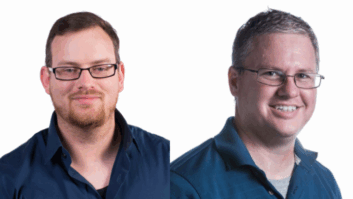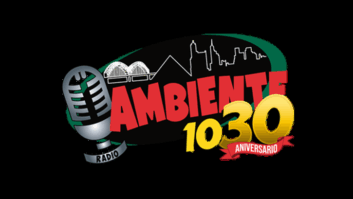If you were to ask, “Why do you love radio?” I’d suggest you grab a cold drink and sit down. It’s not a simple answer, because for me, it’s never been just about the music or the voices — it’s about everything. The sound, the feeling, the mystery of it all.
My love affair with radio goes back more than six decades, and it started, like many things do, at Grandma’s house.

Every Sunday, we’d have dinner at her place. She had this beautiful, big Zenith console radio in the living room, and as we arrived, you could hear the local Italian program echoing through the house. It wasn’t just background noise — it meant something. It meant we were together, it meant we were home, and somehow it meant there was a whole world happening out there that we could tune into.
My fascination deepened when my sister came home from a date and told us she’d visited a “radio station in a house,” where the DJ broadcast from the kitchen. I remember turning on our radio, finding that station and imagining what it looked like — how it worked. Who was moving the dials? How did they get music into that box?
Then came Elvis. My sister brought home a Presley record. I heard it first in our living room — and then, a day later, on the radio. It took a while to make the connection: The songs I loved at home were being played on the air for everyone to hear.
That was a big moment. But the biggest one came when my childhood friend Dick Zornow and I walked through the front door of WBBF radio in Rochester, N.Y.
That visit changed everything.
WBBF’s transmitter site was one of four radio facilities within two and a half miles of our home. This one had its control room open to view — and it was like walking into another world. While my friends played baseball or basketball, I found a folding chair and parked myself at the control center of the city’s #1 station. Watching. Learning. Soaking up every sound, switch and smile. I was hooked.
We lived so close to those RF plants, it felt like you could hear the signals in your teeth. Just up the road from WBBF was WSAY, a quirky local station where announcers came and went so frequently, they reused air names like “Tommy Thomas.” I learned something important there: If you could read clearly and someone left, you might just get a chance.
That chance came during the legendary blizzard of 1966. One of their announcers got snowed in and decided it wasn’t for him. I learned about the opening from friends, and that blizzard became the opening door to my professional life.
I was drawn in first by the energy — the fun of hearing people laugh and play their favorite records. Then by the tools: the turntables, the tape decks, the transmitters, the towers, the blinking lights, the clicking relays. I watched in awe as engineers cued up announcers with precision, flipped switches that launched the next event. I saw acetate discs being cut for commercials and got to witness the arrival of the Gates ST-101 tape deck. One day, WBBF unveiled a new invention: magnetic tape in a plastic cartridge, which revolutionized the way we played commercials — and later, music.
I get it now, as a parent. That kind of curiosity to understand how things work — that’s something some kids are just born with.
Before we moved to the suburbs, I’d visit a local park that had a carousel, but I wasn’t just there for the ride. I was mesmerized by the mechanism driving it all. Instead of a calliope, the ride was powered by a Seeburg jukebox spinning the hits of the day. Again, it was the music — but also the machine that delivered it.
On Feb. 13, 1966, I sat behind the mic for the first time as a paid radio employee. I remember staring at the controls, thinking, This is what you wanted. You’re finally here. Now what?
That moment was nearly 60 years ago. And it’s been 65 years since I first glimpsed the magic behind the mic. Long before that first paid shift, I was tuning in stations from Chicago, New York, Cleveland, Cincinnati — giants like WCFL, WLS, WABC, WSAI. I was supposed to be doing homework, but instead I dreamed of someday saying those call letters myself.
That dream came true, many times over. My first on-air moment was at age 13, calling into WHAM in Rochester during a local talk show. Since then, I’ve had the privilege of working behind the mic at legendary stations like WBBF, WSAY, WLW, WLAC, KOGO, KRTH, KGB, WSAI, WCKY, WGR, WKRC — and more.
It wasn’t just a hobby. It was in my blood.
My uncle was chief engineer at WRNY in the 1950s. My mother’s sister married the brother of a local DJ. The connections ran deep — and so did my need to understand everything.
Even now, I find joy in turning on a receiver and hearing voices and music in real time. AM, FM, shortwave — it still gives me that same thrill. I’ve collected radios capable of hearing time signals from WWV and WWVH, and like many of us, I once had my own “station” in the basement.
In 2025, I can still broadcast without even putting on shoes. And that’s something that amazes me — how much has changed, and yet, how much remains the same.
Some people say the days of towers and transmitters are numbered. That may be true. But the idea of broadcasting — of sending a message from one to many without wires or waiting — still holds power. It always will. Today’s media world is crowded. Streaming, podcasts, videos on demand. But when disaster strikes or breaking news hits, what’s still there for us?
Radio.
Reliable. Instant. Intimate.
We’ve added screens, yes. But the simple joy of tuning into a familiar voice or a favorite song remains unmatched. I believe radio continues to matter not in spite of its age — but because of it.
From Grandma’s Zenith to my own home studio, it’s been a lifelong journey of signals, stories and sound. I didn’t just fall in love with radio.
I lived it.
And I still do.







